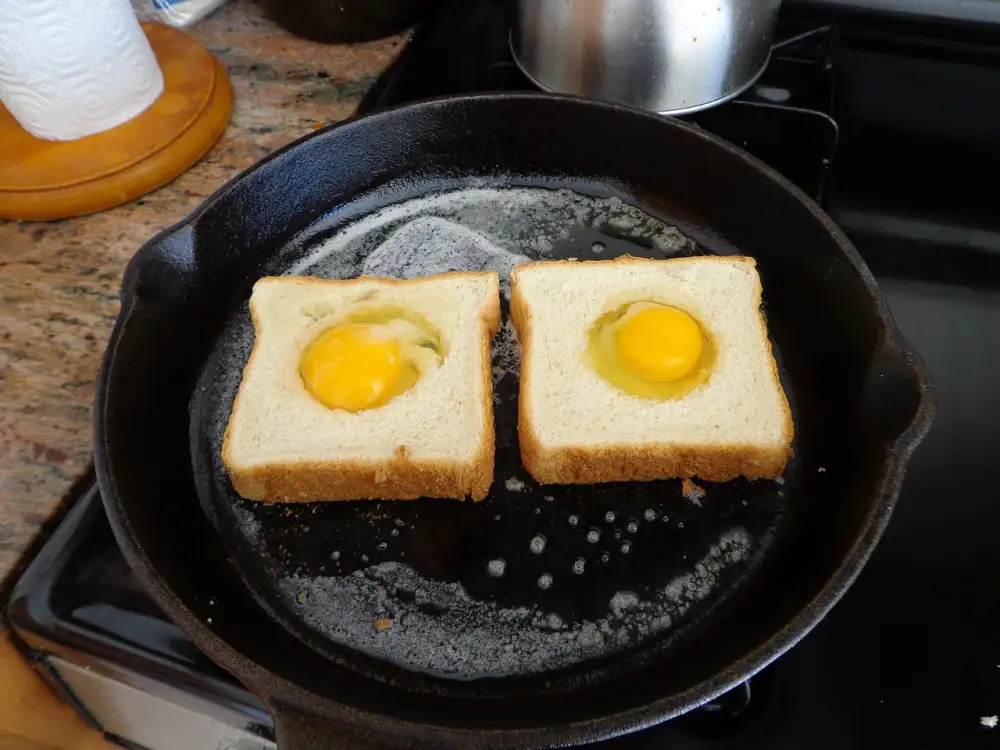Ultimate Guide to Cleaning Your Cast Iron Skillet Like a Pro

- Gather necessary supplies: coarse salt, a sponge or brush, hot water, and a clean towel.
- Rinse the skillet with hot water while it's still warm to remove excess food particles.
- Sprinkle coarse salt on the skillet to create an abrasive paste.
- Use a sponge or brush to scrub the salt paste on the skillet, focusing on stubborn spots.
- Rinse the skillet thoroughly with hot water.
- Dry the skillet completely with a clean towel to prevent rusting.
- Optionally, apply a thin layer of oil to the skillet to season and protect it.
Gather necessary supplies: coarse salt, a sponge or brush, hot water, and a clean towel.
To properly clean your cast iron skillet like a pro, it's essential to gather the necessary supplies beforehand. You will need coarse salt, which acts as a gentle abrasive to help remove food residue without damaging the skillet's seasoning. Additionally, have a sponge or brush on hand to assist in scrubbing away any stubborn bits. Hot water is crucial for effectively rinsing off the salt paste and leftover debris. Lastly, make sure to have a clean towel ready to thoroughly dry the skillet after cleaning to prevent rusting and maintain its quality for years to come.
Rinse the skillet with hot water while it's still warm to remove excess food particles.
Rinsing your cast iron skillet with hot water while it's still warm is a crucial step in the cleaning process. The heat helps to loosen any stuck-on food particles, making them easier to remove. By rinsing the skillet immediately after use, you prevent food from hardening and becoming more difficult to clean later on. This simple yet effective method not only helps in removing excess food but also prepares the skillet for the next steps in the cleaning process.
Sprinkle coarse salt on the skillet to create an abrasive paste.
Sprinkling coarse salt on your cast iron skillet is a simple yet effective way to create an abrasive paste that helps to remove stubborn food residue and grease. The coarse texture of the salt acts as a gentle scrubbing agent without damaging the seasoned surface of the skillet. This method is particularly useful for lifting stuck-on bits of food that can be difficult to remove with just water and a sponge. Additionally, the salt helps to absorb excess oil and moisture, leaving your skillet clean and ready for the next use.
Use a sponge or brush to scrub the salt paste on the skillet, focusing on stubborn spots.
Using a sponge or brush is essential to effectively scrub the salt paste on the skillet, especially targeting stubborn spots where food residue may be stuck. The abrasive nature of the salt paste, combined with the scrubbing action of the sponge or brush, helps to lift off any remaining debris without damaging the skillet's seasoning. This step is crucial in ensuring that your cast iron skillet is thoroughly cleaned and ready for future use.
Rinse the skillet thoroughly with hot water.
After scrubbing the salt paste on the skillet, it's time to rinse it thoroughly with hot water. This step is crucial to remove any remaining food particles and salt residue from the skillet. Make sure to use hot water as it helps in loosening any stuck-on bits and aids in cleaning the skillet effectively. Thoroughly rinsing the skillet will ensure that it is free from any debris before drying it completely with a clean towel.
Dry the skillet completely with a clean towel to prevent rusting.
After rinsing the skillet thoroughly with hot water, it's crucial to dry it completely with a clean towel to prevent rusting. Any remaining moisture on the surface can lead to rust formation over time, which can damage the skillet and affect its cooking performance. Make sure to dry both the interior and exterior of the skillet thoroughly before storing it. This simple step will help maintain your cast iron skillet in top condition for years to come.
Optionally, apply a thin layer of oil to the skillet to season and protect it.
Optionally, applying a thin layer of oil to your cast iron skillet can help season and protect it. After drying the skillet completely with a clean towel, use a paper towel to spread a small amount of vegetable oil or melted shortening all over the skillet, including the handle and exterior. This will create a protective barrier against moisture and help maintain the skillet's non-stick surface. Remember to store your cast iron skillet in a dry place to prevent rusting and maintain its longevity.
Published: 16. 04. 2024
Category: Home



